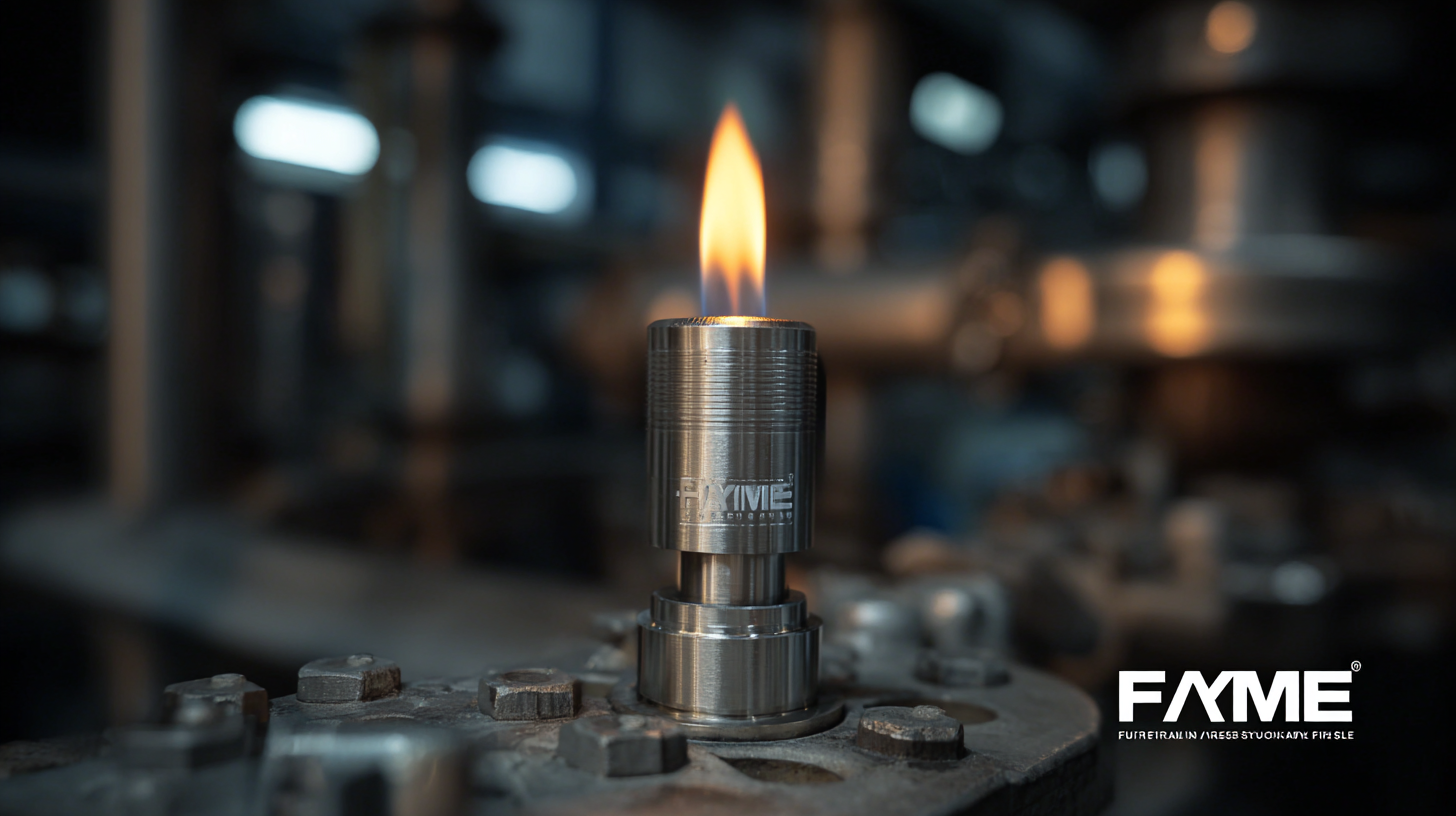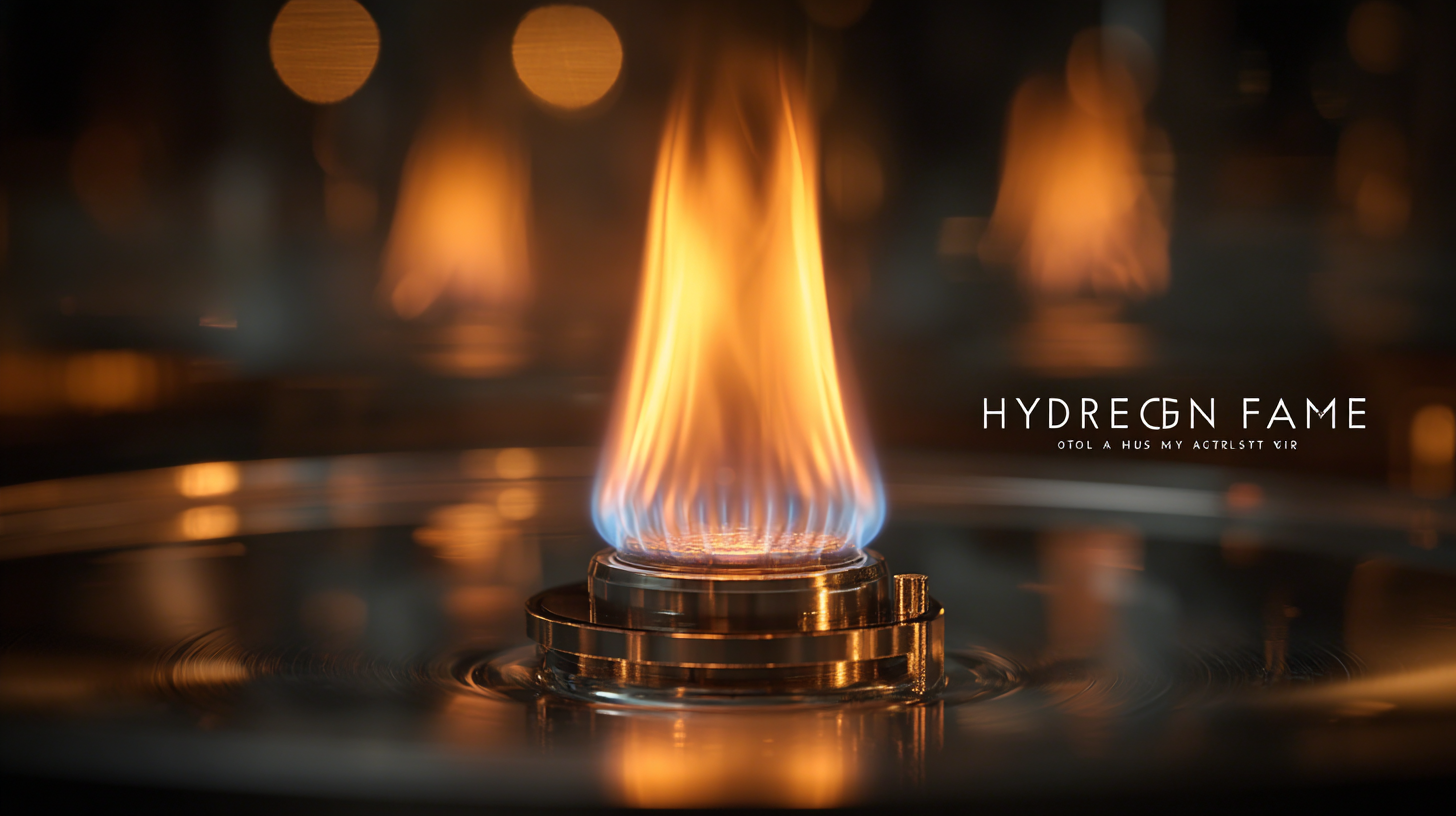Leave Your Message
 In recent years, the hydrogen market has witnessed significant growth, driven by the increasing demand for clean energy solutions and advancements in fuel cell technology. According to a report by the Hydrogen Council, the global hydrogen market is expected to reach $2.5 trillion by 2025, emphasizing the urgent need for enhanced safety measures in hydrogen applications. One critical component of ensuring safety in environments where hydrogen is present is the use of a Hydrogen Flame Arrestor. These devices play a vital role in preventing the propagation of flames and explosions, providing a necessary layer of protection for industries handling this highly flammable gas. As safety regulations become more stringent, understanding the best practices for selecting and implementing Hydrogen Flame Arrestors will be essential for companies aiming to mitigate risks while maximizing their operational efficiency in the evolving hydrogen landscape.
In recent years, the hydrogen market has witnessed significant growth, driven by the increasing demand for clean energy solutions and advancements in fuel cell technology. According to a report by the Hydrogen Council, the global hydrogen market is expected to reach $2.5 trillion by 2025, emphasizing the urgent need for enhanced safety measures in hydrogen applications. One critical component of ensuring safety in environments where hydrogen is present is the use of a Hydrogen Flame Arrestor. These devices play a vital role in preventing the propagation of flames and explosions, providing a necessary layer of protection for industries handling this highly flammable gas. As safety regulations become more stringent, understanding the best practices for selecting and implementing Hydrogen Flame Arrestors will be essential for companies aiming to mitigate risks while maximizing their operational efficiency in the evolving hydrogen landscape.
Hydrogen is a clean and efficient energy source, but it also presents unique safety challenges due to its flammability. Hydrogen flame arrestors play a critical role in safety protocols by preventing the propagation of flames in environments where hydrogen is stored or used. These devices act as a barrier, allowing for the safe venting of gases while preventing an explosion or fire from spreading through the system. Understanding the importance of these components is essential for any industry that handles hydrogen, ensuring both personnel and infrastructure are adequately protected.
Incorporating top-notch hydrogen flame arrestors into safety protocols not only mitigates risks but also enhances overall operational efficiency. These devices come in various designs suited for different applications, from industrial plants to research facilities. By prioritizing the installation of high-quality flame arrestors, organizations can comply with safety regulations, reduce insurance liabilities, and foster a culture of safety. The effectiveness of flame arrestors lies not only in their design but also in their regular maintenance and proper integration within safety systems, making them indispensable in the safe handling of hydrogen.
| Strategy | Importance | Key Features | Recommended Applications |
|---|---|---|---|
| Regular Maintenance | Ensures consistent functionality and reliability. | Visual inspections, performance tests, and replacement of worn parts. | Hydrogen storage facilities, chemical plants. |
| Proper Installation | Reduces risk of malfunction due to improper fitting. | Correct sizing and use of compatible materials. | Research laboratories, industrial applications. |
| Training Personnel | Equips staff with knowledge to handle emergencies effectively. | Regular training sessions and safety drills. | All hydrogen-utilizing environments. |
| Implementing Safety Standards | Ensures compliance with legal regulations and safety guidelines. | Adoption of ISO and other relevant safety standards. | Government and industrial sectors. |
| Using High-Quality Materials | Enhances durability and resistance to environmental factors. | Corrosion-resistant alloys and precision manufacturing. | Critical installations and high-risk areas. |
When it comes to managing hydrogen safely, understanding the different types of hydrogen flame arrestors and their specific applications is essential. Hydrogen flame arrestors are devices designed to prevent the propagation of flames into hydrogen systems, especially in industrial settings where hydrogen is produced or used. Among the various types, the passive flame arrestor is one of the most common, utilizing a series of metallic mesh screens to dissipate heat and quench flames. This type is typically employed in storage tanks and piping systems, where the prevention of ignition is critical.
Another type, the active flame arrestor, incorporates sensors and automated systems to respond to potential ignition threats. This advanced technology is often used in environments where hydrogen is handled under varying pressures and temperatures, such as refineries and chemical processing plants. Additionally, specialized flame arrestors designed for specific applications, such as gas blending or fuel cells, provide tailored solutions to enhance safety measures. By selecting the right type of hydrogen flame arrestor, industries can minimize risks and ensure safe handling of hydrogen, setting the groundwork for secure operations in the growing hydrogen economy.

When it comes to ensuring safety in hydrogen applications, choosing the right flame arrestor is crucial. An effective hydrogen flame arrestor must possess specific key features to mitigate risks associated with hydrogen combustion. One of the primary characteristics is a robust construction that can withstand high temperatures and pressures, preventing the propagation of flames. Look for materials resistant to corrosive gases, as hydrogen can react with certain metals, compromising the arrestor's effectiveness. Additionally, the design should incorporate a quick-response mechanism that can rapidly extinguish flames, further enhancing safety.

Another important feature to consider is the flame arrestor's flow capacity. It should facilitate a smooth passage of gas without creating backpressure, which can lead to dangerous situations. The integration of advanced filtration systems is also essential, as this can prevent the accumulation of impurities that may affect performance. With the increasing focus on hydrogen as a clean energy source for internal combustion engines and mixed fuel applications, ensuring that flame arrestors are engineered to handle various conditions is more important than ever. As hydrogen production and storage technology evolve, so too must our approach to safety, underscoring the need for reliable flame arrestors in these systems.
When it comes to installing and maintaining hydrogen flame arrestors, following best practices is crucial to ensuring safety and efficiency. First, proper installation starts with selecting the right type of arrestor for your specific application. Consider factors such as the flow rate of hydrogen, the potential for backpressure, and the surrounding environmental conditions. It’s essential to adhere to manufacturer specifications during installation, ensuring that the arrestor is positioned correctly in the system to effectively prevent any flame propagation.
Regular maintenance is another critical aspect of utilizing hydrogen flame arrestors. This involves routine inspections to check for any signs of wear and tear or blockages that could compromise performance. Operators should also ensure that all components are free from corrosion and damage. Additionally, conducting routine testing of the arrestor's functionality can help identify any issues before they become serious problems. By adhering to these maintenance practices, organizations can significantly enhance the reliability and safety of their hydrogen systems.
Hydrogen flame arrestors play a crucial role in maintaining safety in environments where hydrogen is handled. Real-world case studies provide compelling evidence of their effectiveness in preventing catastrophic events. For instance, in a chemical processing facility, a hydrogen flame arrestor was installed after an incident involving a small explosion due to a rapid release of hydrogen gas. Following the installation, the facility reported a 75% reduction in flame-related incidents, demonstrating the significance of these devices in protecting both personnel and infrastructure.
In another case, a research laboratory specializing in hydrogen fuel cell technology faced challenges with hydrogen leaks during experiments. By integrating flame arrestor technology, the lab not only enhanced the safety of its operations but also improved compliance with regulatory standards. The successful implementation led to increased confidence among researchers and stakeholders, showcasing how proactive safety measures can foster a culture of innovation without compromising safety. These examples underline the necessity of investing in the best hydrogen flame arrestors to mitigate risks and promote a secure working environment.
